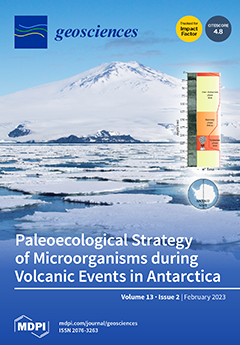Bottled waters are among the most important products in the human diet. In Morocco, eleven bottled mineral waters were analyzed (physicochemical composition and water stable isotopes) to identify their geologic origins and hydrochemical characteristics. The study of the ionic ratios shows that the
[...] Read more.
Bottled waters are among the most important products in the human diet. In Morocco, eleven bottled mineral waters were analyzed (physicochemical composition and water stable isotopes) to identify their geologic origins and hydrochemical characteristics. The study of the ionic ratios shows that the mechanisms of water–rock interaction, such as the dissolution of carbonate and silicate minerals, influence the chemistry of these mineral waters, which are controlled by lithology and tectonics, sometimes with the influence of deep flux through fractures. The water from the Oulmes plateau shows a Na-HCO
3 chemical facies in relationship with alkaline granite. Moreover, the carbonated waters (EM
G and EM
GL) are characterized by high concentrations of Si, Li, Rb, Sr, and Cs due to deep CO
2 flux origin. The waters of Saiss, Middle Atlas, and Rif are of the Ca-HCO
3 type linked mainly to carbonate formation. The stable isotope contents of water range from −7.74 to −5.35‰ for δ
18O and −45.4 to −30.4‰ for δD. The recharge altitude of the aquifer was estimated to be between 250 and 1200 m, following a δ
18O altitudinal gradient between 0.25 and 0.27‰ per 100 m. The industrial production process and the natural presence or artificial addition of CO
2 can also influence the isotopic composition of water. These results can be a relevant guide to decision makers for better exploitation and assessment of the water quality.
Full article





